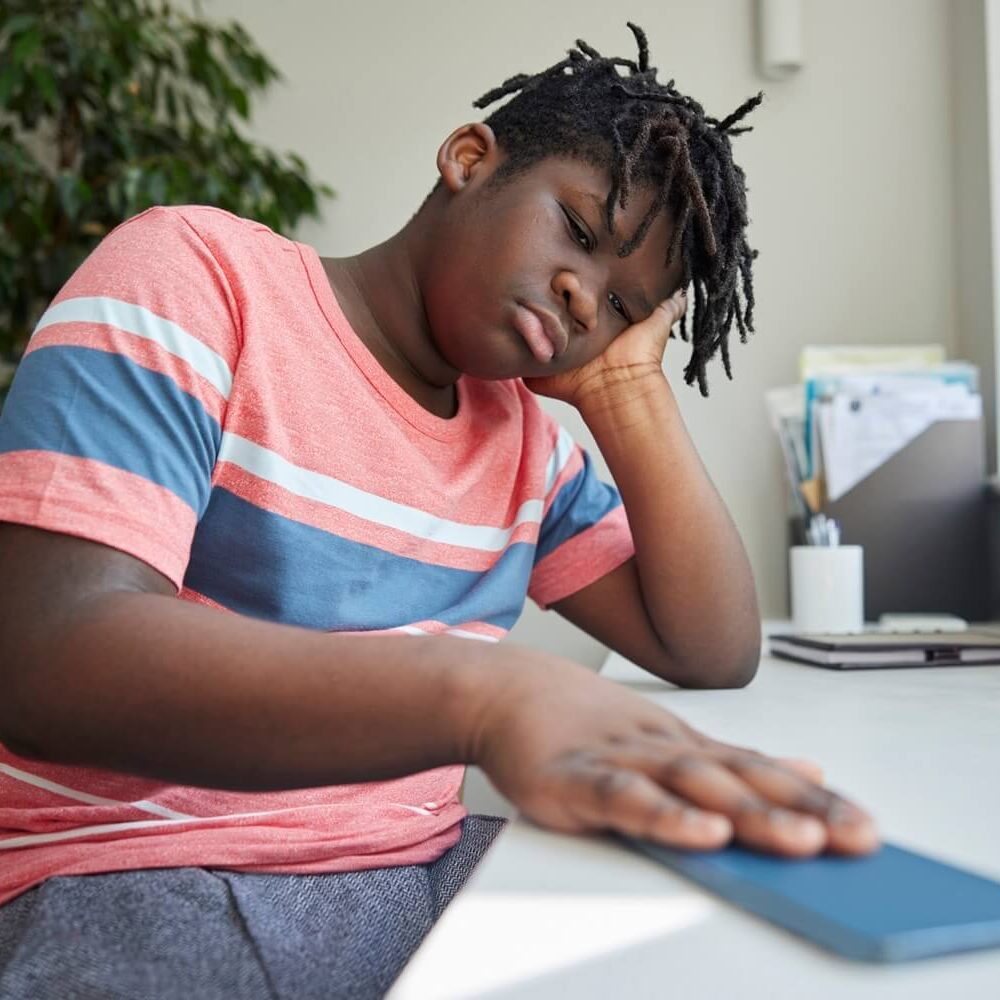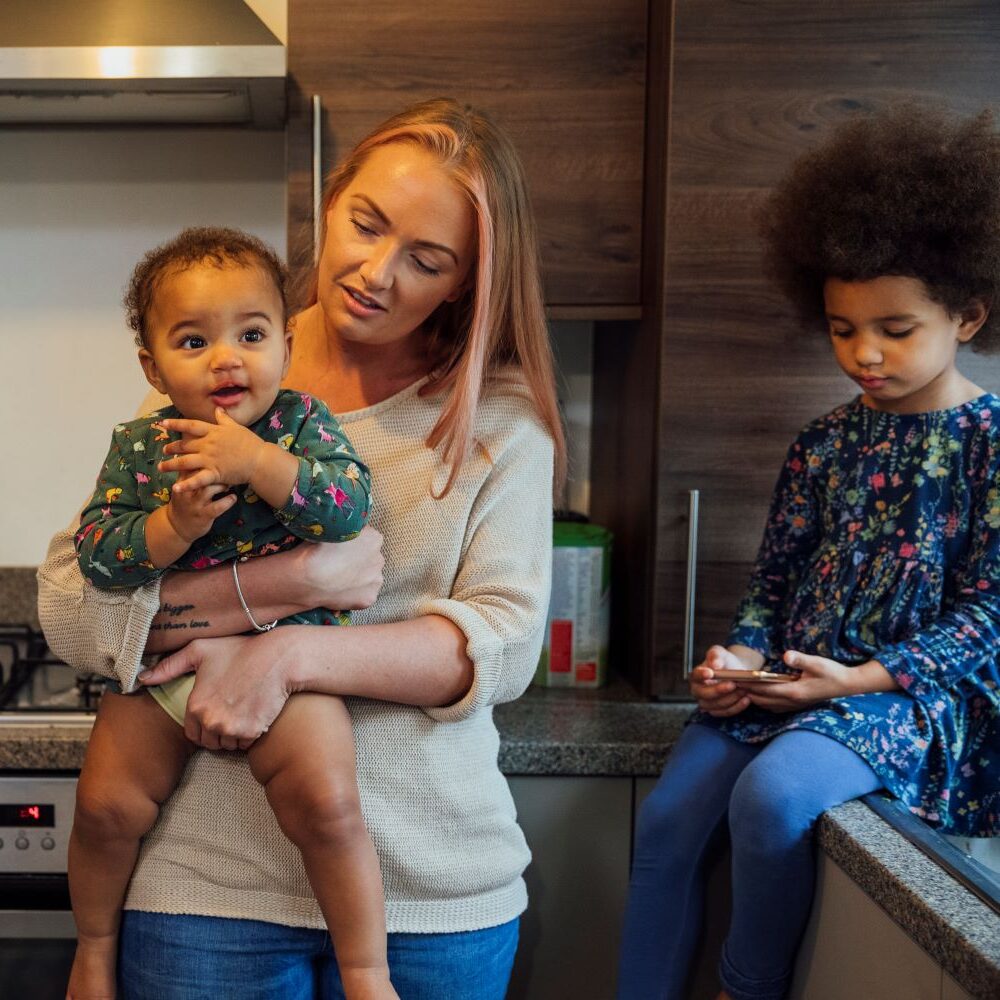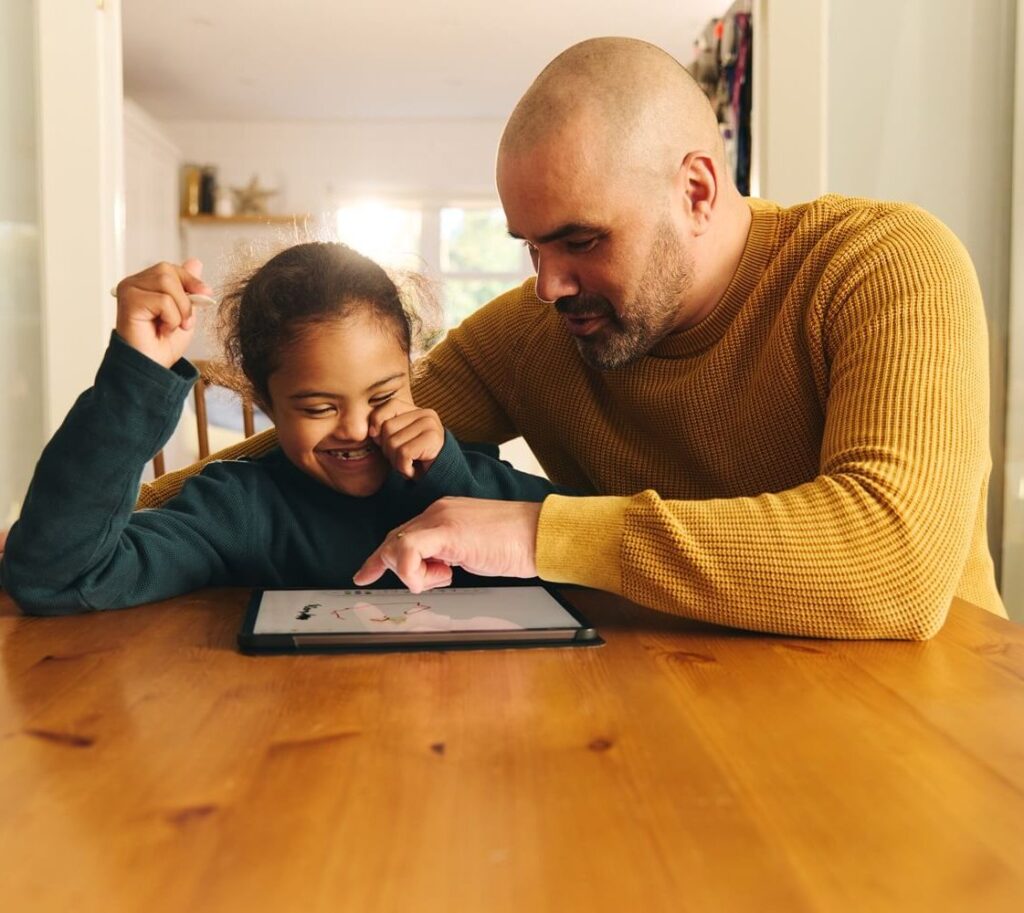For the vast majority of adults, mobile phones are part of everyday life – and increasingly, that is true for children too. Whether it’s for safety, staying in touch, or keeping up with friends, at some point you may find yourself wondering if it’s time to give your child a phone.
This article explores the pros and cons of mobile phone ownership for children. We know this can be a very difficult decision to make and there’s no right or wrong answer. It’s also a topic that can be very divisive, as people will all have their own opinions. We’re not here to tell you what to do, but instead to give you some information to help you decide what’s right for your family.
When and why parents consider giving their child a mobile phone
According to a 2025 report by Ofcom, mobile phone ownership among children in the UK has been steadily increasing. 19% of children aged three to five already have a phone, and this rises to 30% among six to seven year olds. By the age of 12, 82% of children own a mobile phone, and by 17 years old, that figure reaches 99%.
A common age for children to receive their first phone is between nine and 11, often around the time they start secondary school. There are a range of reasons why:

Safety and independence
When children start secondary school, it can involve travelling further from home, often on their own for the first time. A mobile phone can be reassuring for both parent and child, making it easier to check in, coordinate pick-ups, or get help in an emergency.
It can be particularly useful for those who split their time between two homes, or who have busy after-school schedules. Having access to a phone can also help children feel more confident and capable of going places more independently.
Educational use
Many secondary schools now use digital platforms for homework, timetables, and communication. Children often have their own school email address and may be expected to access learning resources online.
A phone can make it easier to stay organised and keep up with schoolwork. And managing a phone – charging it, keeping it safe, and using it appropriately – can help children learn about responsibility. A phone can also help children develop the digital skills that are increasingly important in today’s world.
Social inclusion
As children grow older, their friendships and social lives become more important. If most of their peers have phones, and particularly their closest friends, not having one can lead to them feeling excluded or being left out of group chats and social plans.
Potential drawbacks of giving your child a mobile phone
Research from Internet Matters highlights several concerns that parents should be aware of when it comes to children and mobile phone use:

Physical health impact
A significant 63% of parents believe that time spent online negatively affects their child’s health. Many parents are particularly concerned about the impact of screen time on their child’s sleep, concentration, and physical wellbeing, as well as the way it can interfere with family time. Notifications and the temptation to scroll late into the night can reduce sleep quality and duration, which in turn affects emotional regulation, academic performance, and overall wellbeing.
Additionally, extended phone use can contribute to a more sedentary lifestyle. When children spend long periods on screens, they may be less likely to take part in physical activity, outdoor play, or sports. This can affect posture, muscle development, and overall fitness levels.
Online safety
In addition to health concerns, 67% of children report experiencing some form of online harm. This includes exposure to inappropriate content, unwanted contact from strangers, and cyberbullying. Some children – especially older girls – have reported feeling lonelier and more vulnerable as a result of their online experiences.
The risks go beyond what children see online. Research from the Office for National Statistics shows that nearly one in five children aged 10 to 15 have experienced online bullying, and over a third have accepted friend requests from people they don’t know. A smaller number have shared their location publicly (8.5%) or met up with someone they first spoke to online (4.4%).
While these risks are real, there are also practical steps parents can take to help keep their child safe. Open conversations, parental controls, and age-appropriate boundaries can make a big difference. For more guidance, see our article: Online safety for children and young people.

Social pressure and mental health
Mobile phones can intensify the social pressures children already face. Platforms like Instagram, TikTok, and Snapchat often present idealised versions of people’s lives, which can lead children to compare themselves to others. This can affect their self-esteem, especially if they feel they don’t measure up in terms of appearance, popularity, or lifestyle.
There’s also a growing expectation among young people to be constantly available – responding to messages quickly, staying active in group chats, and keeping up with trends. This can become overwhelming and lead to anxiety or feelings of exclusion if they’re left out of conversations or online interactions.
Over time, these pressures can contribute to low mood, poor body image, and even symptoms of depression, particularly in more vulnerable children.
For help supporting your child’s mental health, see our articles:
Parental challenges
For many parents, keeping up with their child’s digital world can feel like a full-time job. New apps, games, and social platforms emerge regularly, each with its own privacy settings, risks, and social norms. Understanding how these platforms work – and how children use them – can be daunting.
Even well-informed parents may struggle to monitor their child’s activity without feeling intrusive or overbearing. This can lead to a sense of helplessness or anxiety, especially when parents hear about online dangers in the news but feel unsure how to respond.
You may also worry about setting the right boundaries:
- How much screen time is too much?
- How do you balance trust with safety?
There’s no single right answer, which can leave parents feeling uncertain or overwhelmed.

Things to consider before making a decision
Every child is different, and there’s no universal rule for when a child is ready for a phone. Here are some questions to think about when making your decision:
- Is my child mature enough to handle the responsibility of a phone?
- Do they understand the risks and rules around phone use?
- Why do they want a phone and what will they use it for?
- Can I set clear boundaries and monitor their usage?
- Is our family ready to have open, age-appropriate conversations about online safety?
- Do I feel confident using parental controls and privacy settings?
- Would a basic phone (calls and texts only) be a better starting point?
Case study: Wendy’s experience of introducing a phone to her 11-year-old son
Wendy first considered giving her son a mobile phone when he was ten, but decided it wasn’t necessary at the time since he wasn’t travelling independently and was always picked up from school. The family aimed to delay the decision for as long as possible, but knew secondary school would bring greater independence and a need for communication.
Influenced by the Smartphone-Free Childhood movement, Wendy joined a local WhatsApp group for parents. She found the discussions helpful, especially around the risks of internet access and bullying. “It’s not having a phone per se… it’s having unlimited access to the internet and social media that’s the problem,” she said. To meet the need for communication without internet access, she chose a basic Nokia phone with no data, no camera, and minimal distractions.
Wendy chose a ParentShield SIM card, which allows parents to monitor messages and calls, block contacts, and set alerts for trigger words in messages. “You can log into a portal and see every single message and call,” she explained. “We try to give him privacy and trust, but the option is there should we feel the need to check his messages.” But the phone proved difficult to use, meaning her son rarely replied to texts. And because it didn’t vibrate when it was on silent mode, he often missed calls.
There were other practical challenges too. Her son couldn’t access a discounted bus pass, which required a QR code, and he couldn’t check his homework on the school’s app until he got home.
Some kids are doing their homework on the bus, on their phones, just to get it out of the way. But we just say to him, it’s fine – you can do it on the laptop when you get home.
As her son settles in to secondary school, Wendy is considering upgrading to an old iPhone with the same SIM card, still without internet access. “That might mean it becomes more of a useful communication tool, while still protecting him from online harm,” she said. And while she has no way of knowing where her son is from his phone location, Wendy has opted for an Apple AirTag that he can pop in his backpack, having reviewed its privacy settings.
Wendy has prioritised open communication with her family, explaining online risks in age-appropriate terms. She also encouraged her son to have a response ready if others questioned his basic phone. “He says, ‘I’m with my friends having fun. I don’t need to be glued to a screen.’”
For Wendy’s family, the approach has been gradual – introducing functionality step by step while maintaining parental controls and open conversations.
Trying to get that balance is really hard, and it might be a different solution for other people. For us, it's about taking baby steps.
Tips for introducing a mobile phone
If you decide to give your child a phone, here are some ways to make the transition smoother:
- Set clear rules: Agree on screen time limits, phone-free zones (e.g. bedrooms, mealtimes), and appropriate app usage. You might write up a digital family agreement to clearly set out boundaries.
- Use parental controls: Most devices allow you to restrict content, set time limits, and monitor usage. If you need help with this, see Internet Matters’ guides to parental controls.
- Talk regularly: Keep communication open about what your child is doing online, who they’re talking to, and how they’re feeling. For some guidance on this, see Internet Matters’ conversation starters.
- Model healthy habits: Children learn by example, so try to demonstrate balanced phone use yourself.
- Review and adjust: As your child gets older, revisit the rules and adapt them to suit their changing needs and maturity.
Final thoughts
There’s no perfect age or one-size-fits-all answer to the question of whether or not to give your child a mobile phone. It’s a personal decision that can change as your child grows and matures, or when your family’s needs changes. The most important thing is that you make the decision that feels right for your family.

Call, text, email or web chat FamilyLine
If you’re feeling overwhelmed, worried or upset about any aspect of your family life, FamilyLine is here for you. We offer free emotional support and guidance on family relationships, conflict, parenting, caring, financial worries and more.
Contact FamilyLine











